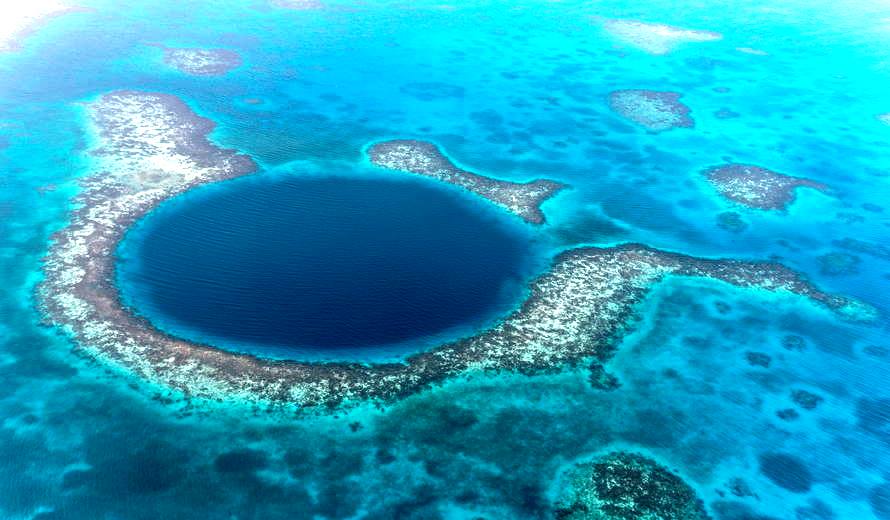Over the past 30 years, I’ve been to Belize five times. Of the 80+ countries I’ve visited in my lifetime, none packs as much cultural and biological diversity into such a small package as does this New Jersey-sized nation.
So, I was delighted to learn that the government of Belize recently committing to restoring and protecting its mangrove and seagrass ecosystems, in accordance with its updated nationally determined contribution (NDC) to the Paris Agreement. These actions will enhance and safeguard the vital ecosystem, biodiversity, and climate resilience benefits that these habitats provide.
Most articles about the restoration of coastal habitats focus on how mangroves and tidal marshes protect the mainland. But they also play a significant role in protecting coral reefs. They do this both removing sediment from the water, and by making the ocean water less acidic. As a lifelong scuba diver who has enjoyed the MesoAmerican Reef in Belize (a UNESCO World Heritage site that’s the second largest reef in the world), this news is of special interest to me.
“Coastal ecosystems have historically been a vital part of Belize’s natural and cultural heritage,” said Dr. Kenrick Williams, CEO of Belize’s National Climate Change Office within the Ministry of Sustainable Development, Climate Change and Disaster Risk Management.
“By committing to the protection, conservation, restoration, and expansion of these ecosystems, we aim to demonstrate the important role that nature-based solutions can play in reducing climate risk impacts and absorbing carbon, in addition to a multiplicity of other social and economic benefits. In the long term, Belize will continue to show real leadership in valuing the contribution of these systems that so many of our people depend on for their protection and livelihood,” he added.
Mangrove and seagrass habitats play a fundamental role in supporting coastal communities and helping them adapt to the impacts of climate change, providing critical ecosystem services such as water filtration and shoreline defense against storm surges. Scientists and governments are increasingly recognizing other climate benefits provided by these ecosystems, which sequester three to five times more carbon per acre than other tropical forests.
“Belize’s commitment to protecting and restoring coastal wetlands—at the heart of the country’s efforts to address and adapt to climate change—provides a measurable contribution to the overall global effort to halt climate change,” said Tom Hickey, senior officer for the Pew Charitable Trust‘s protecting coastal wetlands and coral reefs project. “Belize continues to show the world how research and community engagement can translate the potential of nature-based solutions into tangible action.”
Including coastal wetland restoration and protections within the latest round of NDCs is part of a larger movement embracing nature-based solutions to climate change. Scientific understanding of the climate benefits that coastal wetlands provide has grown significantly over the past 10 years, aided in no small part by new methodologies approved by the Intergovernmental Panel on Climate Change to measure mitigation benefits.
And, although many countries’ first NDCs to the Paris Agreement recognized the potential of these ecosystems, few of them outlined precise steps to protect and conserve these climate benefits. The inclusion of these specific and ambitious commitments in the latest round of NDCs might also help to advance understanding of the role that other marine protections may play in climate policy.
“Coastal ecosystems deliver a wide range of goods and services, including helping countries to meet their climate mitigation, adaptation, and sustainable development goals,” said Nadia Bood, senior program officer for WWF Mesoamérica. “The bold and ambitious step Belize is taking by committing to enhancing the protection and restoration of its coastal ecosystems through its nationally determined contribution process is truly a forward-thinking one that warrants commending.”
Currently, about 14,000 hectares of mangroves are under protection in Belize. The country’s updated NDC includes a set of bold commitments to protect and restore coastal wetlands, including:
- Protection of a minimum of 6,000 additional hectares of mangroves by 2025 and 6,000 hectares by 2030, which will double the current levels of protection;
- Restoration of at least 2,000 more hectares of mangroves by 2025 and 2,000 hectares by 2030;
- Halting net loss of coastal wetland habitat by 2025; and
- Development of a National Seagrass Policy, including the identification of a portfolio of priority areas for protection.
Photo of the famous Blue Hole of Belize is courtesy of UNESCO.

